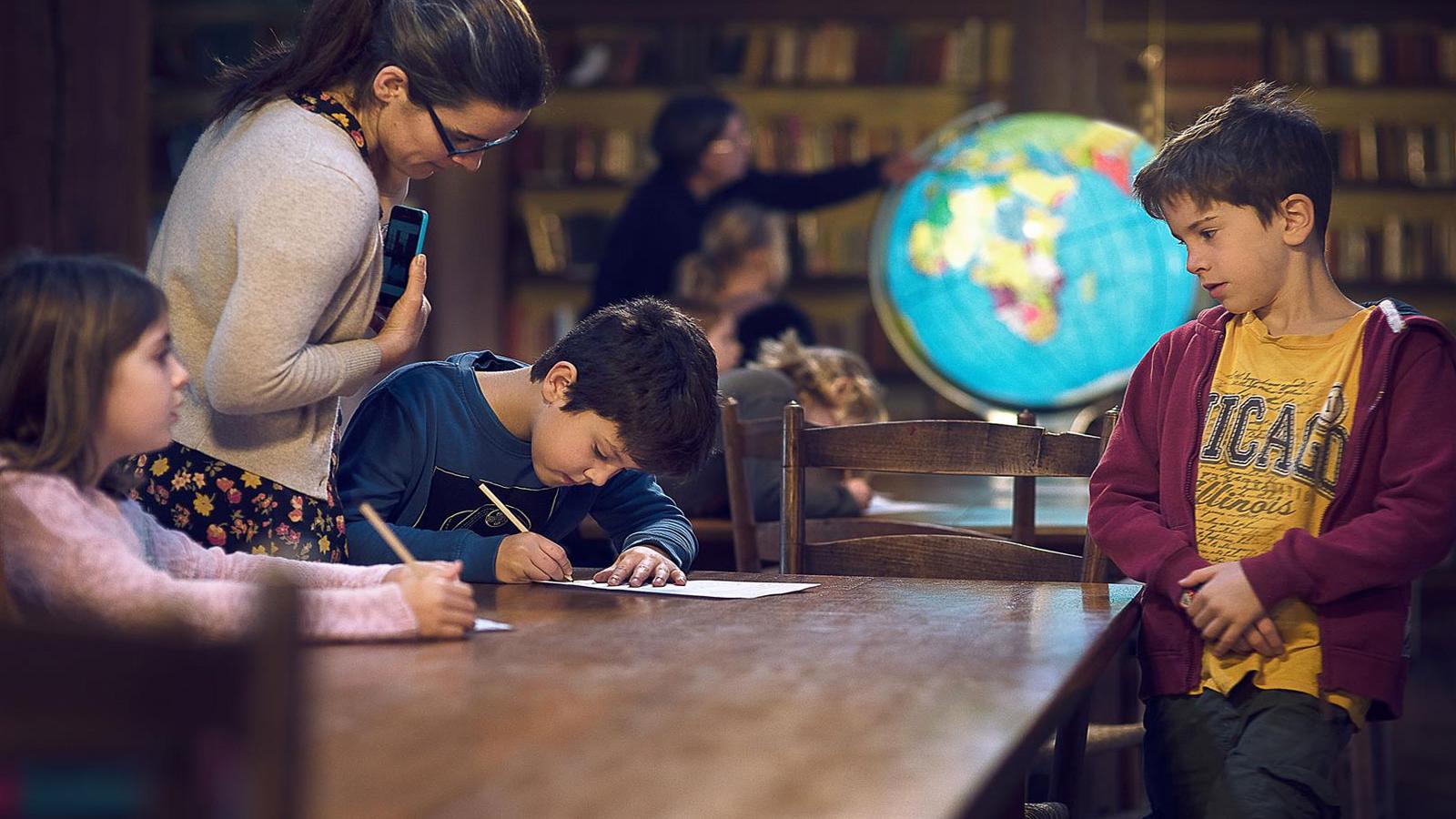
From her earliest years, Anna Bullus was passionate about making things. “As a kid, I was fascinated by how objects were put together,” she recalls and I was always drawing or making stuff. In some ways, it was strange because neither of my parents went down the creative route in their careers, although both of them have an exceptionally creative approach to problem-solving.”
Problem-solving was the order of the day so far as Anna’s education was concerned when she and her family moved down from London to Hampshire. Anna was a pupil at Heathfield School in Ascot, one of the great names among Britain’s boarding school for girls but less than ideal for one with Anna’s artistic instincts. “I needed the freedom to create and my parents realised that, so a lot of legwork was need to find the best place for me,” she says. “When we looked around Bedales, my mother immediately said that this was the school that would suit me and she was right. I stayed there for three days and had no doubt about it from the start – I just loved the whole ethos of the place.”
The real thing would not prove to be a disappointment. “My peers confirmed my initial impressions of the place,” Anna reflects. “Socially, I found Bedales to be such a positive and nurturing place, an ideal environment for someone like me, a reasonably confident child, not the quietest in any group but by no means the loudest either. What I particularly liked was that everyone seemed to be passionate about something, whether that was art, design, music, theatre or something else and those passions were nurtured and harnessed by our teachers.”
I found Bedales to be such a positive and nurturing place, an ideal environment for someone like me
Anna, as we have already seen, had plenty of her own passions, although these were by no means restricted to the creative arts. “Sport was pretty high up on my list,” she says, “particularly tennis and hockey, where we had a great team. Outdoor Work was something else I really enjoyed; I particularly remember waking up really early on some mornings to bake the Mars Bar bread that everyone loved so much. I dabbled in music as well, played the clarinet and had a disastrous foray into the world of the guitar. The big learning curve, certainly compared with my old school, was that it was your responsibility to manage your time and to keep the balance between your work and the extra-curricular stuff. In that sense, I always think of Bedales as more of a halfway house on route to university than just a typical school.”
In the classroom, Anna’s main Bedales mentors were among the school’s greatest creative minds. “Although drawing was not really my strong point, I learned so much from George Hatton, who was really supportive and instrumental in shaping the way I thought about the creative process,” Anna explains. “The big challenge was always to come up with an idea and then transfer it to paper and I realised that for me, art revolved around the practical and the tangible. I spent so many hours in the design workshop, where there were two great influences on me. Mo Halli was brilliant at giving confidence that you could make any weird and wonderful thing that came into your head; he was a hands-on teacher without ever taking a project away from you. As for Martin Box, I don’t think he believed that such a thing as a bad idea existed! For him, design was a process of questioning how and why something should be done in a particular way, which is a very Bedalian trait in general. At Bedales healthy debate was always encouraged, you were taught to question things and that type of thinking has stood me in such good stead.”
A Levels in Art, Design and Business Studies would lead Anna to Camberwell College of Art and a foundation course where she specialised in Three Dimensional Design and graduated with Distinction. “I felt really nervous about leaving school after five blissfully happy years,” Anna admits. “Bedales had felt like a cocoon; all my best friends were there and I worried about having to work at relationships out in the big wide world that had come so naturally and easily at school. I loved the work at Camberwell but sure enough, I did find the social side tougher. Luckily for me, Susie Travis came up from Bedales with me and we spent the entire year practically joined at the hip!”
I always think of Bedales as more of a halfway house on route to university than just a typical school
From Camberwell, it was off to the University of Brighton for Anna, where she continued to specialise in three-dimensional design, notably in the field of plastics and material experimentation, which led to her developing an interest in recycling. “3D design is all about making things, with no need get bogged down in loads of abstract theory,” Anna explains. “I had fallen out of love with graphic design precisely because of the vast amount of theoretic research that seemed to be required. At Brighton, I had one lecture a week, had to produce one essay a term and the rest of the time, I was in the workshop, which is exactly why I chose the course!”
Anna’s growing interest in recycling and sustainability would, while she was still at Brighton, lead to the seminal moment of her working life. On a walk home from University one day, Anna decided to pick up every piece of litter she could find, take it home with her and Google each piece to find out what happened to it once it became waste and what uses there were for each material. Inside one empty crisp packet lay a single piece of used chewing gum. “I tried to find out as much as I could about chewing gum,” Anna relates. “It had only been officially declared as litter and a menace to society as late as 2005 but I couldn’t find anything that suggested a solution for what to do with this mountain of used and discarded gum that was out there. I couldn’t understand how you could have litter of this magnitude and be able to do nothing with it.”
In her final year at university, Anna accordingly found herself in a laboratory in pursuit of a suitably mouldable material which could be used to manufacture a bin to collect chewing gum and subsequently be recycled to make new bins. After hundreds of experiments, she succeeded – Anna now had a product to use for her final year project, little suspecting that she had also laid the foundations for her future career. “All of that experimenting never seemed like a chore to me,” Anna says with amusement. “My husband, who I met on my course at Brighton, always says that I’m basically a geek and I think he might be right!”
Leaving University with a First Class Honours Degree, Anna initially pursued a twin-track strategy, working as a product designer and subsequently a junior product developer in London at the same time as she was showcasing her ‘gumdrop bin’ project around the world. “Companies started to get in touch, wanting to buy the product or at least wanting to showcase a practical design to big global problem,” she says. “I was so proud to be asked and I never had any expectations of commercial success. The roll-out from the various exhibitions was so extraordinary, though, that I decided to set up my own company and see if we couldn’t do something about the global problem of chewing gum waste.”
Gumdrop Ltd (www.gumdropltd.com) was born and after spending three years developing her material, known as Gum-Tec, into something commercially viable, the Gumdrop Bin was launched onto the world in 2010. It was quickly snapped up by Legoland, followed in short order by companies such as Royal Mail, BAA and Amey and as the company’s reputation grew, so did Anna’s personal profile. In the year that the Gumdrop Bin first appeared, Anna was nominated by the Financial Times for a place in the ‘Top 50 Women in World Business Ranking,’ and was placed in Management Today’s ’35 Women Under 35 to Change the Future’. The company has gone on to collaborate with manufacturers and companies globally to make products from recycled and processed chewing gum from wellington boots to mobile phone covers, stationery and packaging.
Gumdrop Ltd was born and ... it was quickly snapped up by Legoland, followed in short order by companies such as Royal Mail, BAA and Amey
“As a designer, you have a huge responsibility to put things out that meet certain social and environmental criteria,” Anna observes. “That’s something that is not only ingrained in me but has also given me the most amazing pleasure. We’re all so much more aware of our debt to the environment – the question is whether we’re doing enough about it. What I’d really like to do is use the success we’ve had as a springboard towards true sustainability in as many areas as we can. It’s been amazing how much gum litter has been reduced in places where the Gumdrop Bin has been used. If we can do that for litter, what else might we be able to achieve in tackling waste, especially plastics, with a bit of innovative thinking?”
And could Anna have dreamed of such a career as a pioneering designer and entrepreneur as a boarder at Heathfield? “Absolutely not,” she laughs. “I would never have imagined for one minute that I would have been able to do what I’ve done. If I hadn’t gone to Bedales, it would never have happened, I’m sure of that - I would have ended up becoming a lawyer or something like that. I wouldn’t have had as much fun as I am now, I can tell you!”
Anna was interviewed in Summer 2019.
